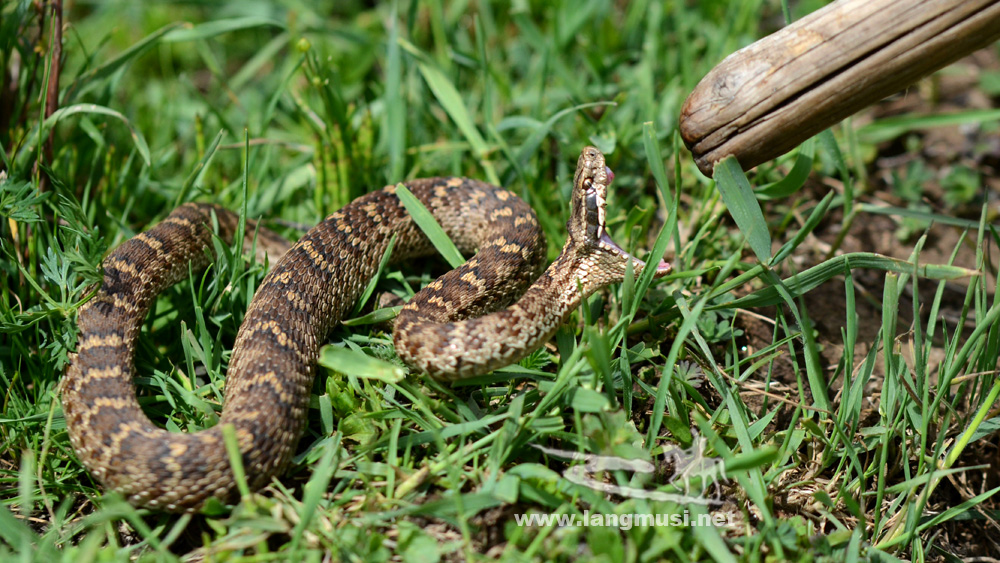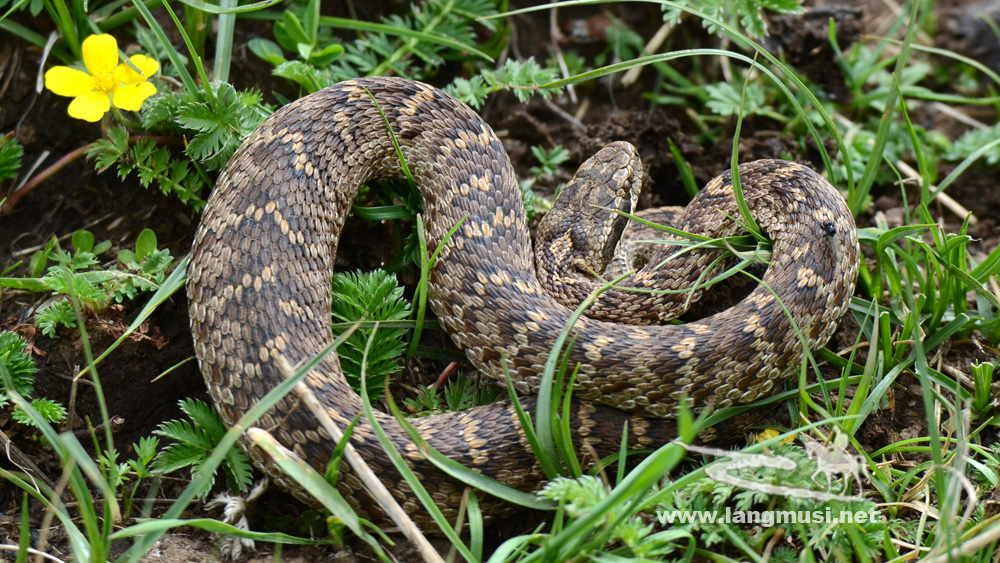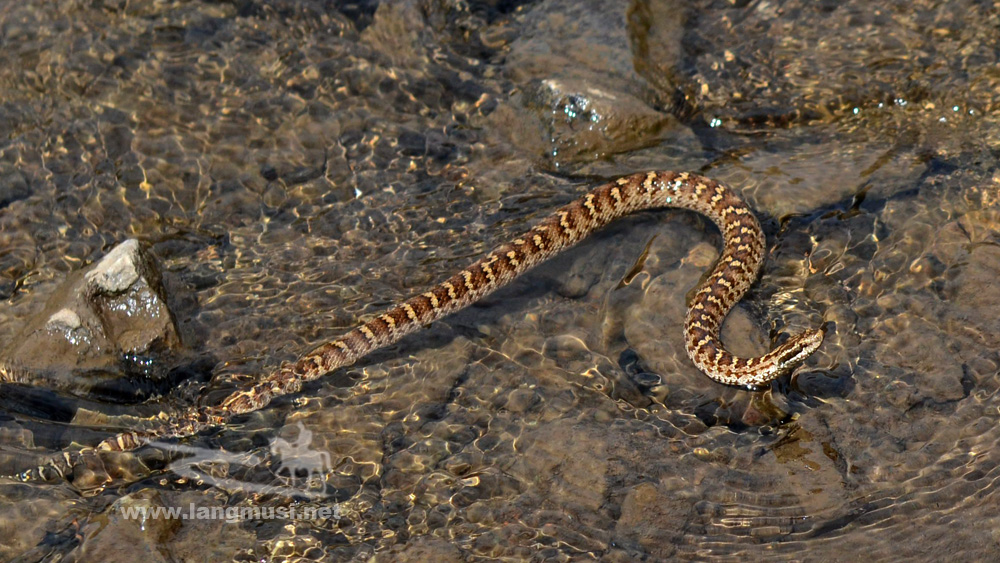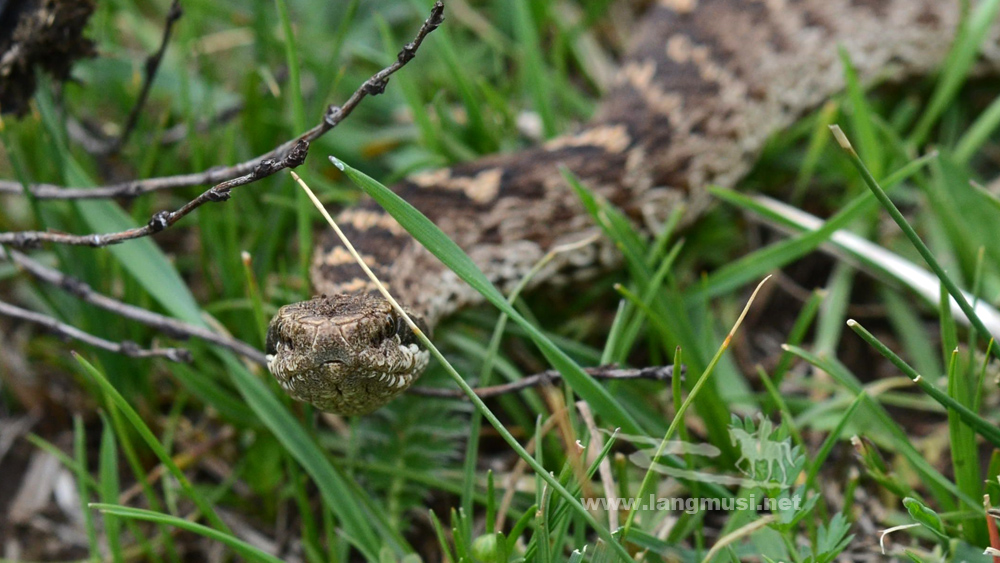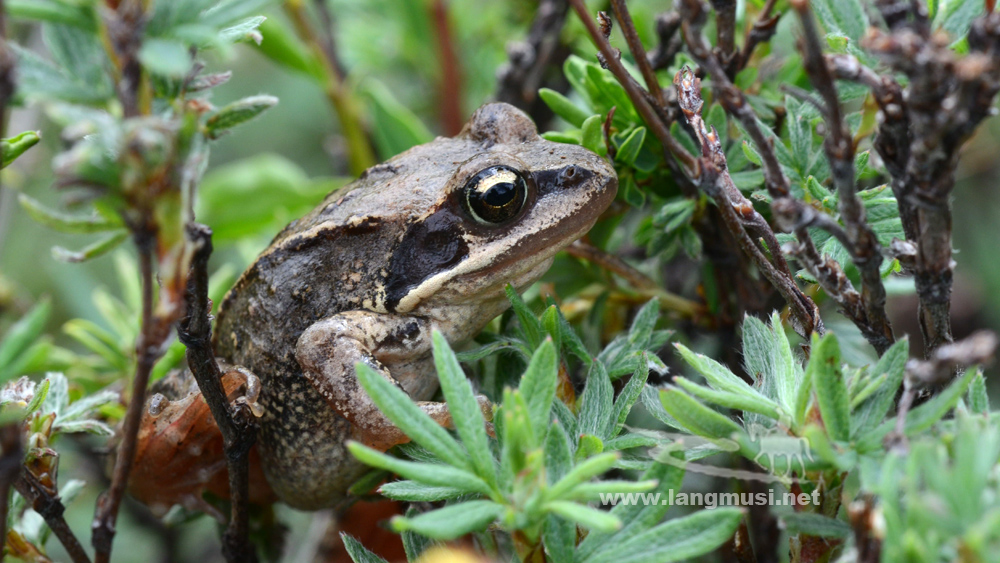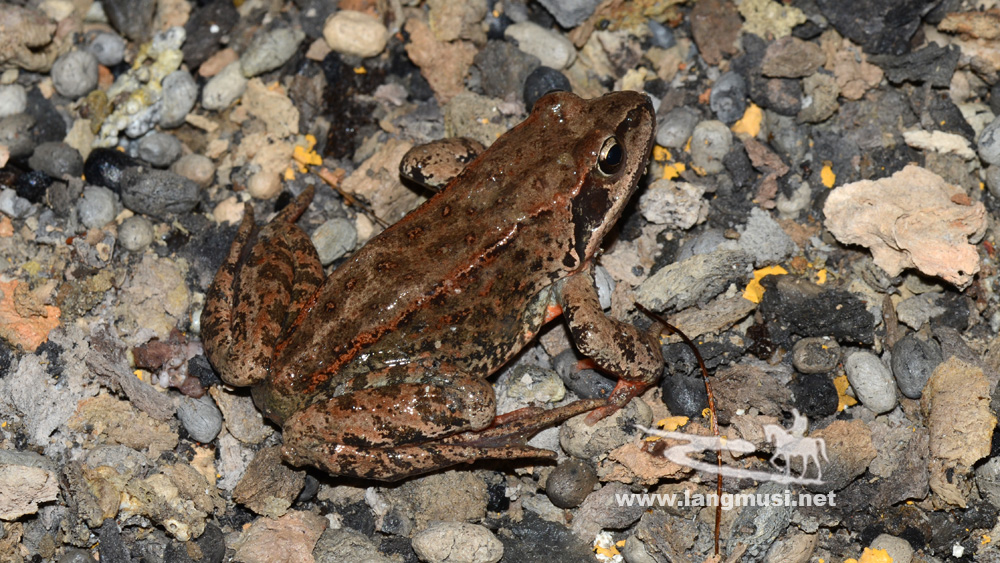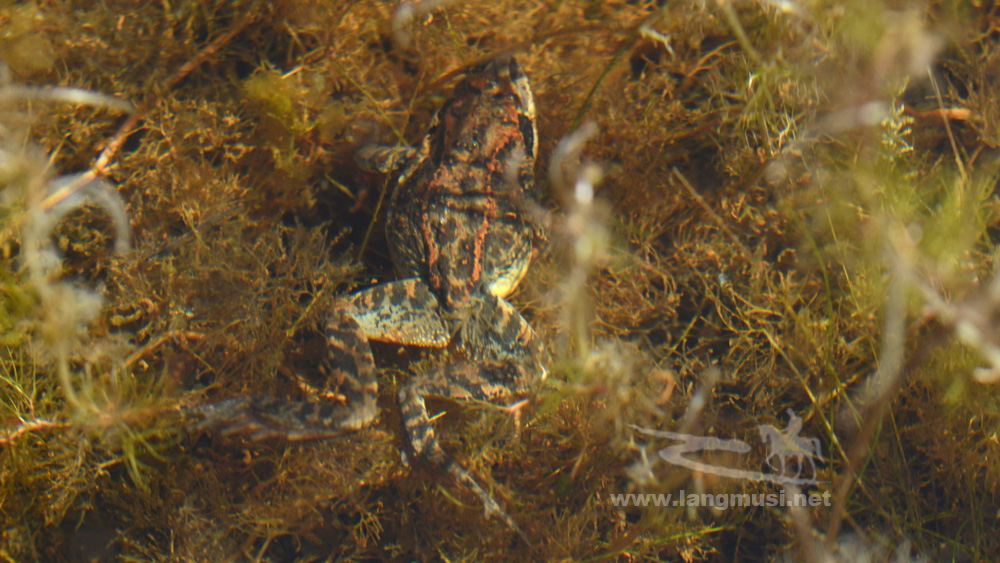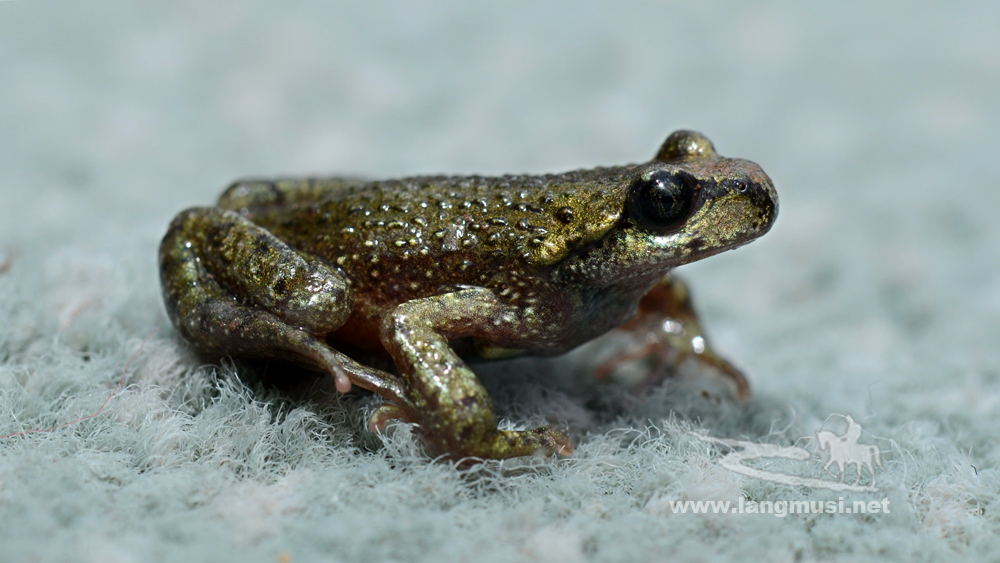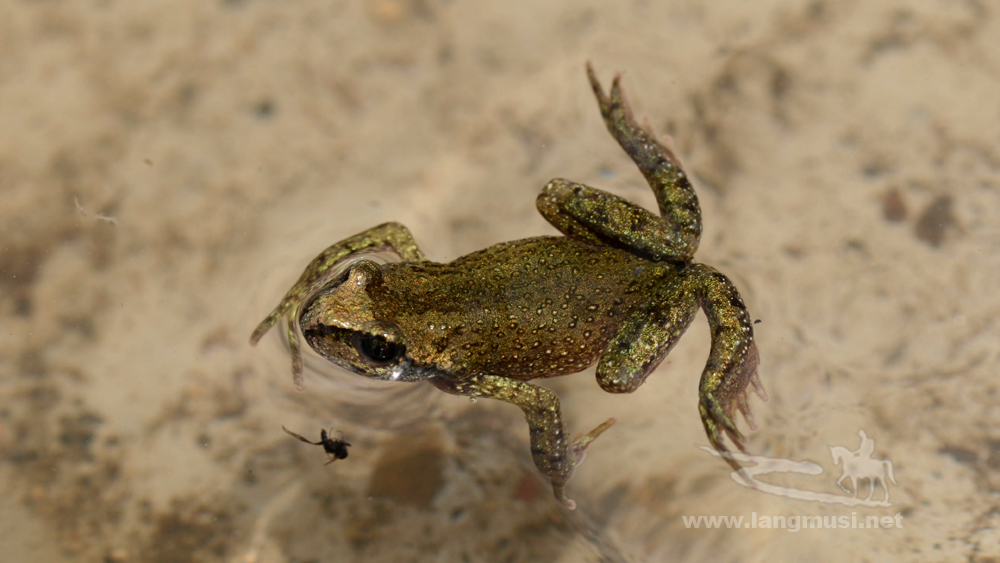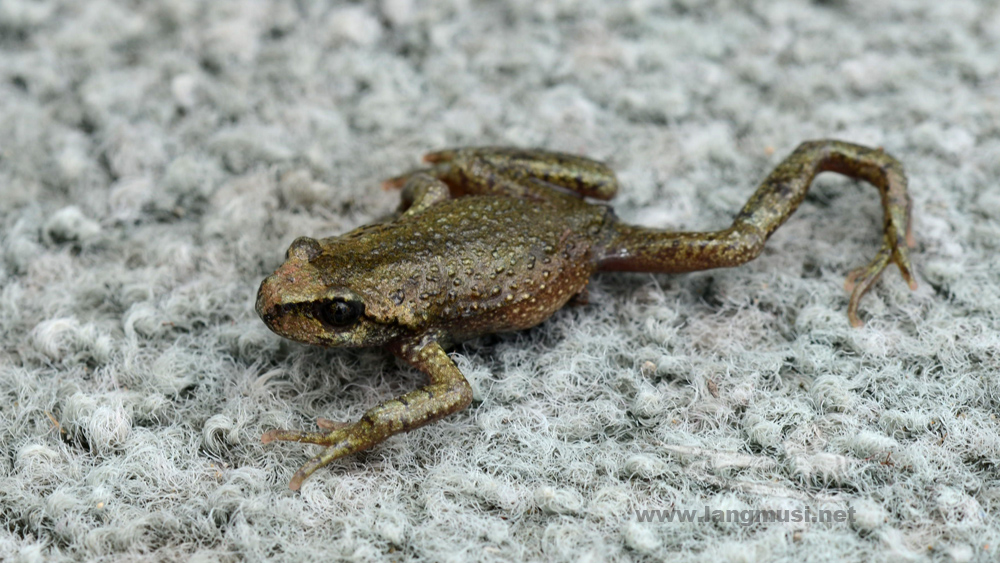It is a small pitviper with the body length 500—600mm.
The plateau brown frog is a species of frog in the Ranidae family, endemic to the plateau region of western China (northwestern Sichuan, eastern Qinghai, Gansu, and very northeastern Tibet). It is a common frog in suitable habitats that include alpine meadows, marshland and grassland. It hibernates in streams. Overwintering sites of R. kukunoris were characterized by year-round flowing water. It is not considered threatened by the IUCN.
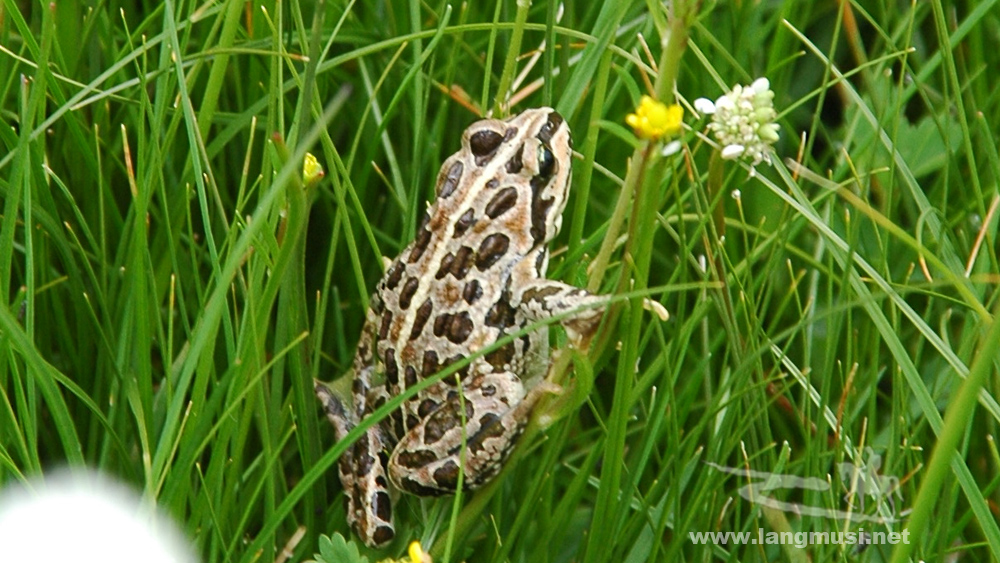
This species is known from Qinghai, Gansu and Sichuan Provinces in China, from 3,300-4,500m asl. It lives and breeds in alpine marshes, pools, ponds and streams in open high-altitude habitats.
Listed as Near Threatened because this species is probably in significant decline (but probably at a rate of less than 30% over ten years) because its habitat is being over-grazed by livestock through most of its range, and there are also other unidentified threats, thus making the species close to qualifying for Vulnerable.
This species is known from northwestern Nepal, and southeastern Qinghai, the eastern and southern part of Xizang, southern Gansu and northwestern Sichuan provinces in western China. It is likely to occur in Bhutan and India, but there are not so far any records.
Males measure about 45–55 mm and females about 50–62 mm in snout–vent length. The fingers have no webbing whereas the toes have rudimentary webbing.
It is an alpine species living near streams and lakes in grassland habitats at elevations of 3,300–5,270 m above sea level. They hibernate in loose soil from September to March or April.
It is a very common species but potentially threatened by diversion of water for agriculture, pollution from agrochemicals, and overgrazing. However, it is not considered threatened overall.
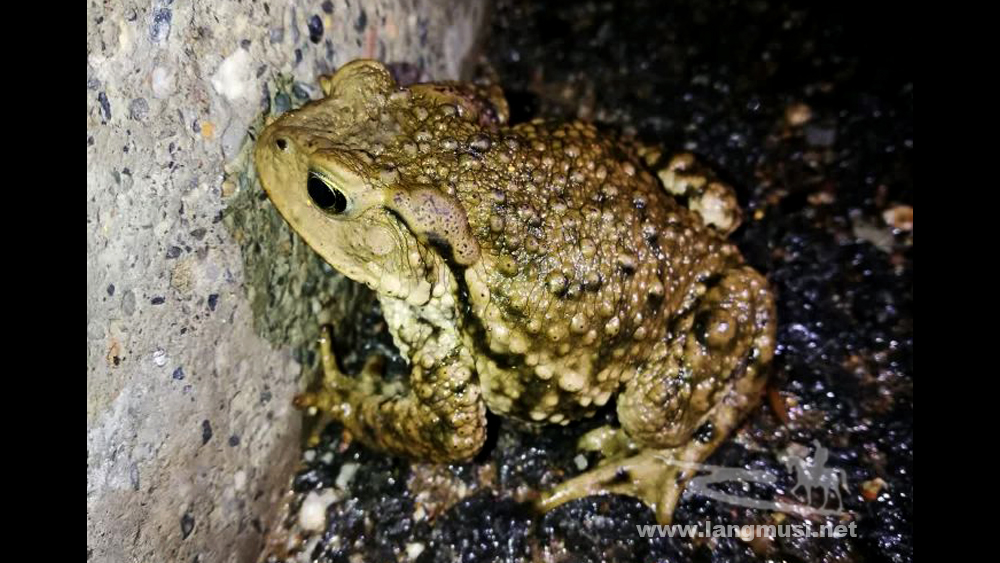
The Minshan toad is a species of toad in the family Bufonidae. It is endemic to China. Its natural habitats are temperate grassland, rivers, intermittent rivers, swamps, freshwater marshes, and intermittent freshwater marshes. It is threatened by habitat loss.


